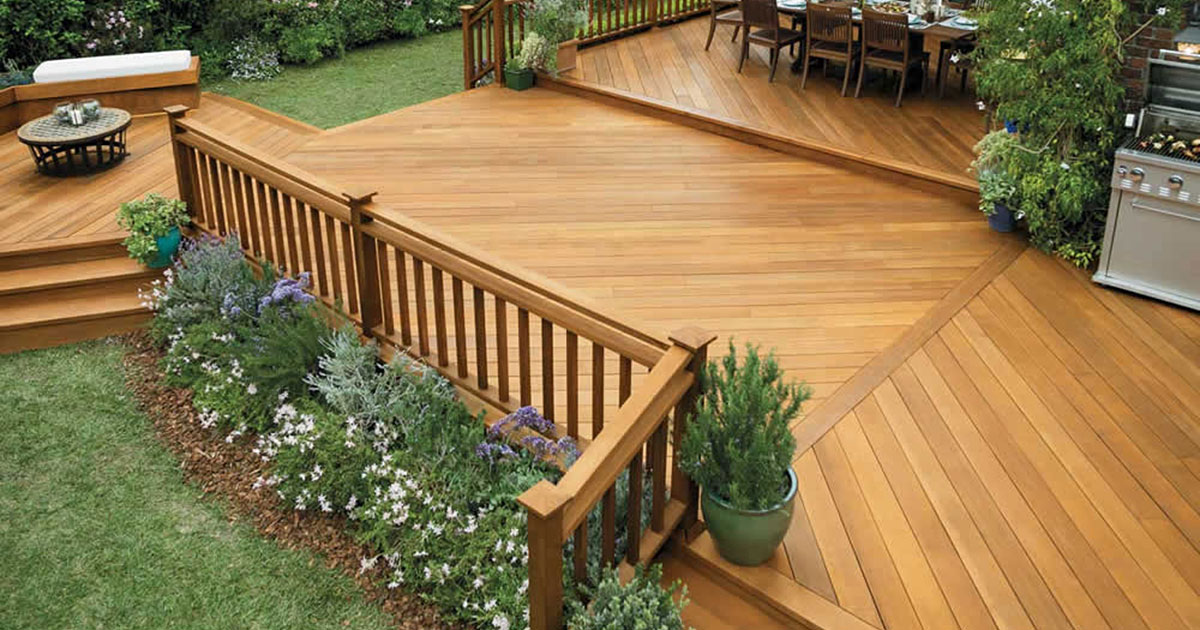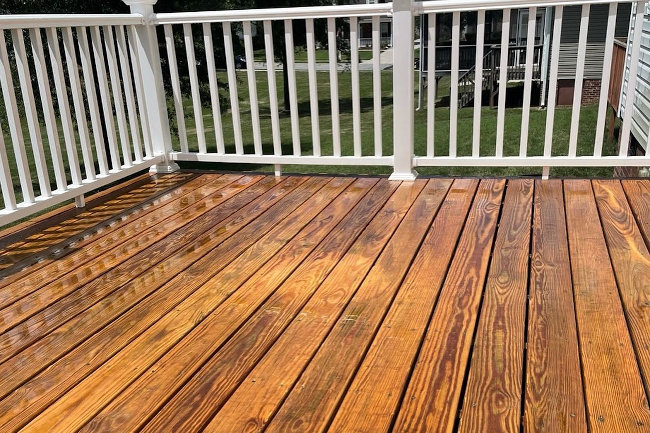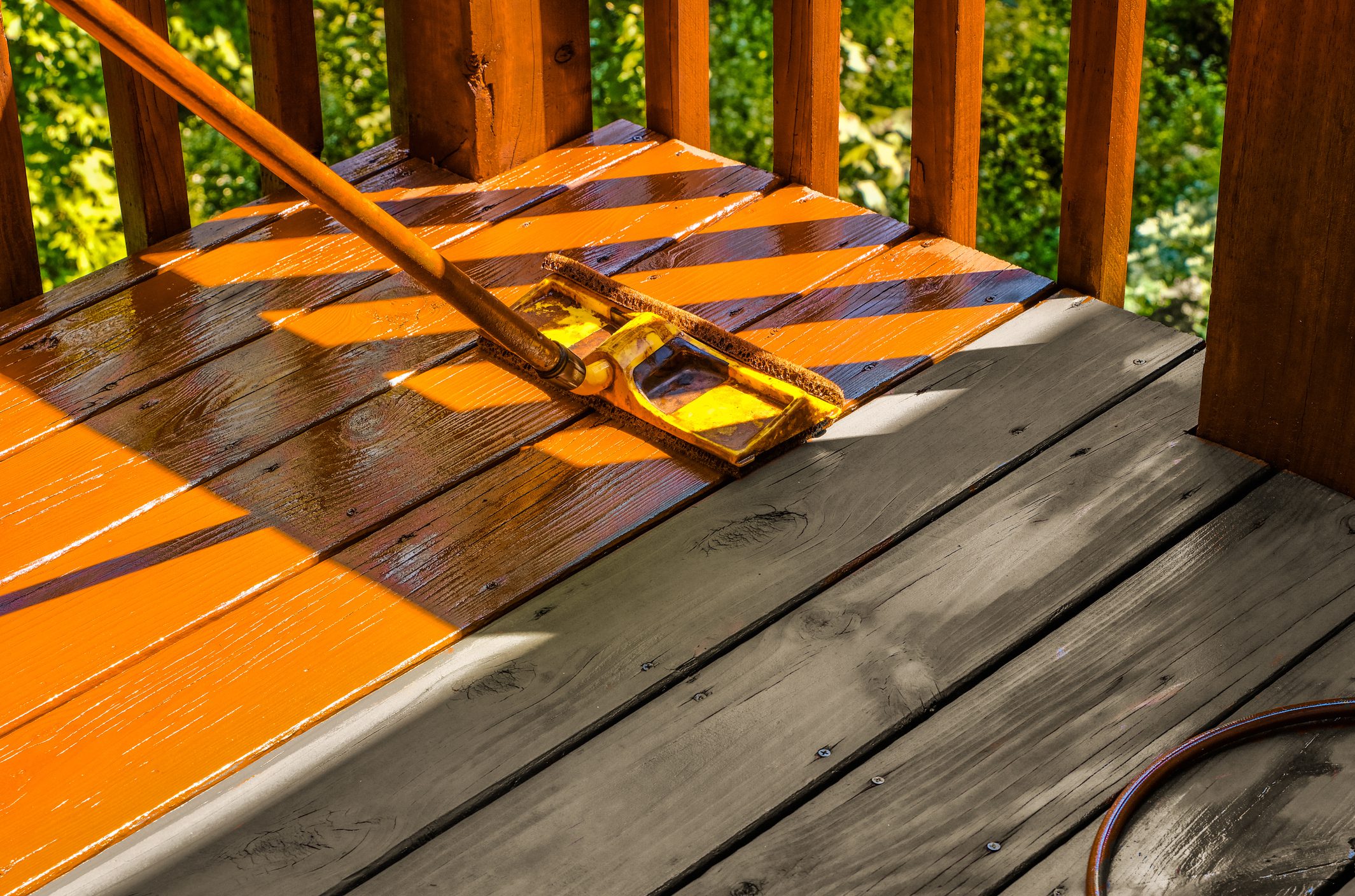Deck Staining Luster: Boost Your Exterior Living Room
Wiki Article
Selecting the Right Stain for Your Fence: Tips and Factors To Consider
When it pertains to improving the appearance and preserving of your fence, picking the appropriate stain is important. With a wide range of choices readily available, it can be frustrating to figure out which stain will certainly finest suit your requirements. This guide will supply you with considerations and tips to assist you make a notified choice. We will explore the different sorts of fence discolorations, variables to consider prior to selecting a tarnish, pointers for preparing your fencing for discoloration, and the distinctions between oil-based and water-based discolorations. In addition, we will explore choosing the appropriate discolor color to match your fence and enhance your outside room. By adhering to these guidelines, you can ensure that your fencing remains protected and visually pleasing for years to come.Recognizing Various Sorts Of Fencing Stains

On the various other hand, water-based spots are made from acrylic or latex and use an extra refined color to the wood. Water-based stains are much easier to cleanse up and have a much faster drying time contrasted to oil-based spots.
Selecting between water-based and oil-based spots relies on numerous factors, consisting of personal preference, the preferred appearance, and the degree of upkeep required. Oil-based spots are advised for surround high-traffic locations or those frequently revealed to severe climate problems. fence staining and sealing. Water-based stains, on the various other hand, are a preferred selection for fence suburbs where appearance and simplicity of use are important
Understanding the differences in between water-based and oil-based spots assists homeowners make an informed decision when selecting the appropriate discolor for their fence. Thinking about the particular requirements of the fence, such as its location, direct exposure to sunlight, and preferred aesthetic, will certainly ensure that the selected stain supplies long-lasting defense and boosts the general elegance of the fence.
Variables to Think About Before Choosing a Discoloration

Various types of timber absorb spots differently, resulting in differing degrees of color strength and sturdiness. Additionally, specific timbers might be much more vulnerable to issues like rot or insect invasion, which might affect the choice of discolor to secure and maintain the fencing.
The environment and climate condition in your area ought to additionally be taken into consideration. You may need a discolor that gives extra defense versus dampness and UV rays if you live in a location with harsh winters months or high moisture. If your fencing is exposed to guide sunshine for lengthy periods, a tarnish with UV inhibitors can assist protect against fading and staining.
Finally, it is essential to consider your desired aesthetic. Various stains supply various shades and finishes, permitting you to customize the look of your fence (fence staining). Consider the total style and layout of your property, along with any type of neighborhood policies or house owner organization standards that might dictate the acceptable stain colors
Tips for Preparing Your Fence for Staining
Cleansing the fence is an essential action as it removes dirt, crud, and any previous finishes that might conflict with the staining process. Scrub the surface area delicately, paying extra interest to areas with stubborn discolorations or mold.This action is critical as tarnishing a wet or wet surface area can lead to inadequate attachment and an uneven coating. Make certain that the fence is entirely dry prior to proceeding with the staining procedure.
Before staining, check the fence for any problems, such as loosened boards or nails. This product helps to open up the wood pores, allowing the stain to permeate more effectively and uniformly.

Comparing Water-Based and oil-based Spots
When selecting a discolor for your fencing, it is important to compare the qualities and advantages of oil-based and water-based spots. Both sorts of discolorations have their very own advantages and factors to consider, so it is important to recognize the distinctions in between them.Oil-based stains are known for their toughness and resistance to put on and tear. In addition, oil-based discolorations often tend to last longer than water-based stains, making them a prominent choice for fences.
On the other hand, water-based discolorations are extra eco-friendly and simpler to tidy up. They have a lower VOC (unpredictable natural substance) material, which means they launch less dangerous fumes right into the air. Water-based spots likewise dry quicker, permitting a quicker application and much less downtime. Nonetheless, they might not provide the very same degree of security as oil-based stains, specifically in rough weather problems.
Ultimately, the selection between oil-based and water-based discolorations depends on your details needs and choices. When making your choice, consider aspects such as resilience, ecological impact, and simplicity of application. Consulting with a specialist or looking for recommendations from professionals can additionally help make sure that you pick the ideal stain for your fencing.
Picking the Right Stain Color for Your Fencing
The selection of a proper stain shade for your fencing is a vital element of boosting its visual appeal and matching the overall style of your outside room (deck cleaning). The best stain color can change a plain, ordinary fence into a striking focal factor that adds deepness and personality to your buildingWhen choosing a stain color for your fencing, it is necessary to take into consideration the design and architecture of your home. If you have a typical or classic style home, earthy tones such as neutrals and browns can create a cozy and welcoming look. On the various other hand, if you have a modern-day or contemporary home, you could consider selecting vibrant and vibrant colors that make a statement.
Another element to think about is the natural environments of your residential property. If you have a lot of greenery, a discolor color that matches the all-natural landscape, such as greens or deep reds, can create a harmonious and natural appearance.
In addition, it deserves considering the maintenance required for different discolor shades. Lighter shades often tend to reveal dust and put on even more conveniently, while darker shades can conceal blemishes and call for much less constant touch-ups.
Ultimately, the choice of stain shade for your fencing need to mirror your individual design and choices - deck staining. Put in the time to explore different choices and consult with specialists if required, to make certain that you select the ideal discolor shade that enhances the appeal and charm of your fencing
Conclusion
In conclusion, when it comes to picking the ideal stain for your fence, it is vital to comprehend the different types of discolorations offered and think about variables such as resilience and desired look. Choosing the appropriate discolor color can boost the general aesthetics of your fence.We will certainly explore the various types of fencing spots, variables to think about prior to picking a discolor, pointers for preparing your fence for discoloration, and the differences in between oil-based and water-based discolorations.Setting apart in between oil-based and water-based spots is essential when recognizing different kinds of fencing spots. Water-based discolorations are simpler to cleanse up and have a faster drying out time compared to oil-based discolorations. Additionally, oil-based spots often tend to last longer than water-based stains, making them a prominent choice for fences.
In final thought, blog when it comes to choosing the best tarnish for your fencing, it is essential to recognize the different types of spots readily available and think about aspects such as sturdiness and wanted look.
Report this wiki page